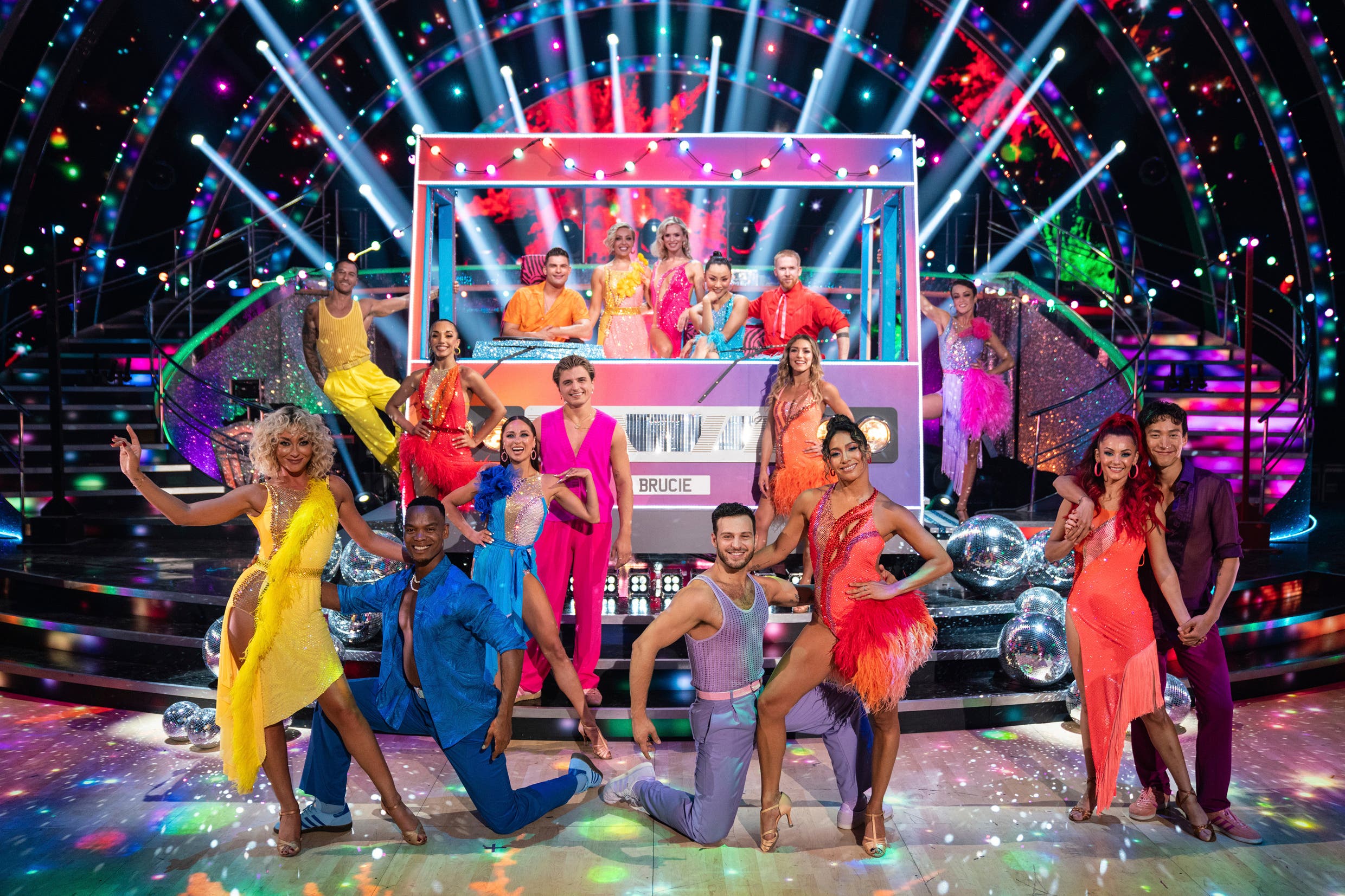From samba to tango: What all the Strictly dances will do for your muscles
These ballroom and Latin dances are a great workout for all ages!

The glitz and glamour of Strictly returns to our screens on Saturday night, and we are eager to see how this year’s celebrity cast cope with the inevitable first show pressure.
Watching your favourite celebs glide across the dance floor over the season might inspire to try out some of the moves for yourself.
We have spoken to Neil Harrison, chief executive officer at British DanceSport Association, who has explained what each dance encompasses and what muscles they target.
Waltz
“The Waltz is characterised by its elegant, flowing movements and graceful rise and fall,” explains Harrison. “Its three-beat rhythm allows for long, sweeping steps, giving the Waltz its signature smooth and continuous movement.
“It provides a moderate cardiovascular workout, improving circulation and enhancing heart health.”
Muscles used: Rectus Abdominis, Obliques, Transverse Abdominis, Quadriceps, Hamstrings, Gastrocnemius, Soleus, Gluteus Maximus.
Tango
“The Tango is known for its dramatic intensity and sharp movements,” notes Harrison. “Its beauty lies in the contrast between fast, staccato steps and slower, fluid moments of connection between partners.
“Tango’s sharp movements increase heart rate, providing a vigorous cardiovascular workout that improves heart function.”
Muscles used: Obliques, Rectus Abdominis, Transverse Abdominis, Quadriceps, Hamstrings, Adductors, Gastrocnemius, Iliopsoas.Foxtrot
“The Foxtrot is a dance of sophistication and elegance, often performed to smooth, flowing music,” highlights Harrison. “Dancers use long, gliding steps and subtle rhythms, creating an air of effortless grace.
“The dance’s slow-quick-quick timing allows for versatility and flexibility, making it both smooth and adaptable,” adds the CEO. “It also provides a low-impact cardiovascular workout, improving endurance and strengthening the heart.”
Muscles used: Transverse Abdominis, Obliques, Quadriceps, Hamstrings, Gastrocnemius, Soleus, Gluteus Maximus.
Quickstep
“The Quickstep is lively, fast, and full of energy,” says Harrison. “Its rapid footwork, hops, and syncopated rhythms create a light, joyful atmosphere.
“It provides a high-intensity cardiovascular workout, increasing stamina and improving heart health.”
Muscles used: Rectus Abdominis, Obliques, Quadriceps, Hamstrings, Gastrocnemius, Iliopsoas.
American Smooth
“American Smooth allows for greater freedom of movement than traditional ballroom dances,” reflects the CEO. “Partners can break away from closed holds to perform dramatic lifts, open movements, and sweeping arm gestures.“This dance is often characterised by its glamorous and expressive style, with more emphasis on creativity and performance,” adds Harrison. “The variety in movements and open choreography increases heart rate, providing a cardiovascular workout that improves overall fitness and heart health.”
Muscles used: Rectus Abdominis, Obliques, Transverse Abdominis, Quadriceps, Hamstrings, Gastrocnemius, Gluteus Maximus.
Viennese Waltz
“The Viennese Waltz is known for its speed and constant turning,” says Harrison. “Dancers perform continuous rotations at a fast pace, creating a sense of whirling motion. The dance is smooth and elegant, with partners maintaining a close hold as they spin gracefully around the dance floor.
“The fast pace of the Viennese Waltz elevates the heart rate, offering a moderate-to-intense cardiovascular workout that improves heart function.”
Muscles used: Rectus Abdominis, Obliques, Transverse Abdominis, Quadriceps, Hamstrings, Gastrocnemius, Gluteus Maximus.
Argentine Tango
“The Argentine Tango is sensual, intimate, and deeply emotional,” says the CEO. “Dancers perform in close embrace, often improvising intricate footwork and sharp leg flicks.
“The controlled yet intricate movements provide a moderate cardiovascularworkout, improving heart health and balance.”
Muscles used: Obliques, Rectus Abdominis, Transverse Abdominis, Adductors, Quadriceps, Hamstrings, Gastrocnemius, Iliopsoas.
Cha-Cha-Cha
“Cha-Cha-Cha is playful, flirty, and full of energy,” emphasises Harrison. “The Cuban motion of the hips is an essential feature, and the dance is characterised by small, precise footwork paired with fast, upbeat music.
“It is a high-energy dance that provides a strong cardiovascularworkout, improving heart health and aerobic fitness.”
Muscles used: Obliques, Rectus Abdominis, Transverse Abdominis,Quadriceps, Hamstrings, Gastrocnemius, Gluteus Maximus.
Samba
“Samba is characterised by its continuous bouncing action and rhythmic hip movements,” highlights Harrison. “The rolling motion of the hips, combined with fast footwork and syncopated rhythms, makes Samba a dance that requires both precision and energy.
“The fast pace and continuous bouncing elevate heart rate, providing a high energy cardiovascular workout.”
Muscles used: Rectus Abdominis, Obliques, Transverse AbdominisLower Body Muscles: Quadriceps, Hamstrings, Gluteus Maximus,Gastrocnemius.
Rumba
“The Rumba is slow, sensual, and expressive, often described as thedance of love,” notes the CEO. “Its Cuban motion emphasises fluid hip movements, while the slow, controlled steps create an intimate and romantic atmosphere.
“It provides a gentle cardiovascular workout, reducing stress andimproving circulation.”
Muscles used: Obliques, Rectus Abdominis, Transverse Abdominis.Lower Body Muscles: Quadriceps, Hamstrings, Gluteus Maximus,Gastrocnemius.
Paso Doble
“The Paso Doble is bold, dramatic, and powerful, inspired by the Spanish bullfight,” says Harrison. “Dancers use sharp, forceful movements to tell a story of strength and dominance. The male dancer often plays the role of the matador, with the female dancer representing the cape.
“The high-intensity movements of Paso Doble provide a vigorous cardiovascular workout, improving heart health and circulation.”
Muscles used: Rectus Abdominis, Obliques, Transverse Abdominis.Lower Body Muscles: Quadriceps, Hamstrings, Gluteus Maximus,Gastrocnemius.
Jive
“Jive is fast-paced, fun, and energetic, with kicks, flicks, and bounce steps that create a lively, joyful atmosphere,” exclaims Harrison. “The dance is light-hearted and playful, with fast footwork and constant movement.
“It provides a high-energy cardiovascular workout, strengthening the heart and improving overall fitness.”
Muscles used: Rectus Abdominis, Obliques, Quadriceps, Hamstrings, Gastrocnemius, Gluteus Maximus.
Salsa
“Salsa is known for its fast footwork, rotational hip movements, andimprovisation,” explains Harrison. “Salsa allows for a lot of personal expression, with dancers adding spins, dips, and body rolls to enhance the playful, rhythmic style.
“It offers a high-energy cardiovascular workout, strengthening the heart and improving cardiovascular endurance.”
Muscles used: Obliques, Rectus Abdominis, Transverse Abdominis.Lower Body Muscles: Quadriceps, Hamstrings, Gluteus Maximus,Gastrocnemius.
Bookmark popover
Removed from bookmarks